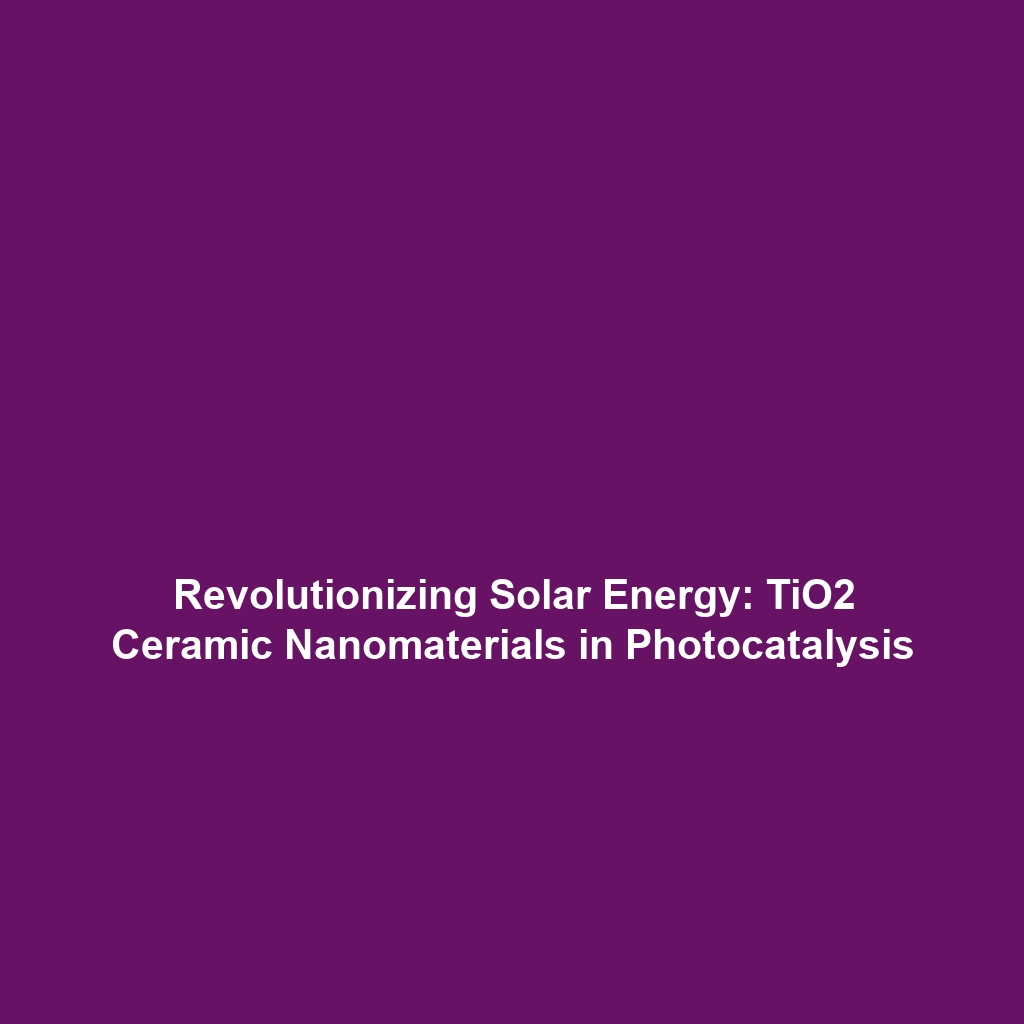Ceramic Nanomaterials: TiO2 in Photocatalysis and Solar Energy
Introduction
Ceramic nanomaterials, particularly titanium dioxide (TiO2), have emerged as pivotal players in advanced nanomaterials research, especially for applications in photocatalysis and solar energy. Their unique properties, including high stability, photocatalytic efficiency, and non-toxic nature, make TiO2 a prominent candidate for facilitating chemical reactions and harnessing solar energy. As the world turns towards sustainable energy solutions, understanding how ceramic nanomaterials like TiO2 contribute to these advancements is critical for future innovations.
Key Concepts
Photocatalysis and Its Mechanisms
The principle of photocatalysis involves utilizing light to accelerate chemical reactions, with TiO2 serving as an effective photocatalyst. The mechanism typically includes the excitation of electrons in the TiO2 particle under UV light, leading to the generation of electron-hole pairs that drive oxidation and reduction reactions essential for pollutant degradation and energy conversion.
Overview of Advanced Nanomaterials
Within the category of advanced nanomaterials, TiO2 represents a significant advancement due to its customizable properties at the nanoscale. The ability to manipulate size, shape, and surface characteristics enhances its functionality in diverse applications ranging from environmental remediation to energy production.
Applications and Real-World Uses
The real-world applications of ceramic nanomaterials like TiO2 in photocatalysis and solar energy are numerous and impactful:
- Environmental Remediation: TiO2 is extensively used in photocatalytic reactors to degrade organic pollutants in wastewater.
- Solar Cells: Innovations in dye-sensitized solar cells utilize TiO2 for efficient light absorption and energy conversion.
- Self-Cleaning Surfaces: The photocatalytic properties of TiO2 are harnessed in coatings for self-cleaning windows and surfaces.
These applications demonstrate how ceramic nanomaterials like TiO2 are instrumental in advancing the field of nanotechnology and sustainable solutions.
Current Challenges
Despite their advantages, the study and application of ceramic nanomaterials like TiO2 face several challenges:
- Limited Light Absorption: TiO2 primarily absorbs UV light, which constitutes a small fraction of the solar spectrum.
- Aggregation Issues: The tendency of nanoparticles to aggregate can diminish their photocatalytic efficiency.
- Environmental Stability: Long-term stability under various environmental conditions poses a significant challenge.
Addressing these challenges is vital for maximizing the potential of TiO2 in photocatalysis and solar energy applications.
Future Research and Innovations
Research is underway to enhance the performance of ceramic nanomaterials like TiO2, focusing on:
- Hybrid Materials: Combining TiO2 with other semiconductor materials for improved light absorption across the solar spectrum.
- Nanostructuring Techniques: Developing novel nanostructures that enhance surface area and photocatalytic activity.
- Functionalization: Modifying TiO2 surfaces with various chemical groups to improve stability and efficiency.
Such innovations herald a new era of solar energy and environmental applications, paving the way for next-gen technologies in advanced nanomaterials.
Conclusion
Ceramic nanomaterials like TiO2 play a crucial role in photocatalysis and solar energy applications, significantly contributing to advancements in advanced nanomaterials. From environmental remediation to solar energy conversion, the potential of TiO2 is immense, although challenges still remain. Continued research and development will be essential for overcoming these issues and harnessing the full capabilities of TiO2. For further reading on advanced nanomaterials and their applications, visit our related articles section.

